South America can seem pretty far from South-East Asia, and actually it is. But many are the common points and the opportunities that stronger relations between Thailand and that part of the world would unleash.
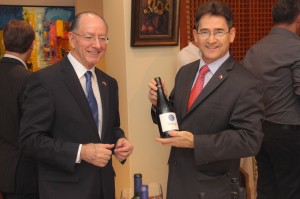 Chile is without any doubt the most interested South American investor in the ASEAN market.
Chile is without any doubt the most interested South American investor in the ASEAN market.
New Chilean products have entered the Thai Market and continue adding value the bilateral agreement between the two countries.
At the end of August, Wine n’ About joined a wonderful event to promote Chilean products in the Thai market, and to introduce a new project Chilean Tastes, with goal of creating business networks between Chilean companies and Thai partners, particularly in the Food & Beverage sector.
During the evening, guests had the opportunity to get to know and try some of Chile’s delicatessen products, such as salmon, mussels, dried fruits and nuts, avocado oil and manjar – dulce de leche – imported for the occasion, and used by Thai chef Thitid “Ton” Tassanakajohn, in typical Thai dishes with a twist.
Guests could also taste wines from William Fèvre Chile, Casal de Gorchs, and Maray vineyards, as well as Pisco sour and mango sour. Pisco is a typical Chilean spirit distilled from grapes that is usually drank on the rocks, with lemon juice and sugar, or with cola drink.
A strong supporter of this initiative is Jaime Rivera, Trade Commissioner and Coordinator of ASEAN Markets at ProChile, an institution of Chile’s Ministry of Foreign Affairs with the mission of promoting exports of the country’s products and services.
 “In the last 20 years the importance of Asia in the world economy increased steadily, and not only thanks to giants like China and India” said Mr. Rivera “That’s why Chile has 6 embassies in South East Asia, covering the activities in 10 countries.”
“In the last 20 years the importance of Asia in the world economy increased steadily, and not only thanks to giants like China and India” said Mr. Rivera “That’s why Chile has 6 embassies in South East Asia, covering the activities in 10 countries.”
And there are some lessons to learn from Chile, for South East Asian countries:
 “40 years ago Chile decided to open its economy to become a developed country. We reduced unilaterally our tariffs to 6%” explains Mr. Rivera “That decision had positive and negative effects, of course. Many companies died because they couldn’t handle the international competition. But, Chilean economy also specialized in certain sectors, where today Chile is a world-class producer, both for quality and quantity.”
“40 years ago Chile decided to open its economy to become a developed country. We reduced unilaterally our tariffs to 6%” explains Mr. Rivera “That decision had positive and negative effects, of course. Many companies died because they couldn’t handle the international competition. But, Chilean economy also specialized in certain sectors, where today Chile is a world-class producer, both for quality and quantity.”
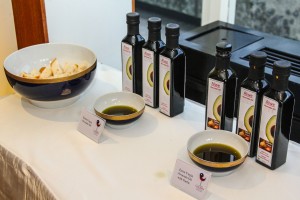 “When democracy came, we had even further positive effects on the economy and we started negotiating several Free Trade Agreements.”
“When democracy came, we had even further positive effects on the economy and we started negotiating several Free Trade Agreements.”
Chilean economy is today one of the most open economies in the world and that came thanks to strong diplomatic efforts: “We believe that the World Trade Organization is the way to achieve global economic freedom, but due to its global focus, the negotiations can be slow and difficult. That’s why Chile decided to be member of many multilateral groups and negotiated 24 unilateral agreements, covering 56 economies – the agreement with the EU covers several countries.”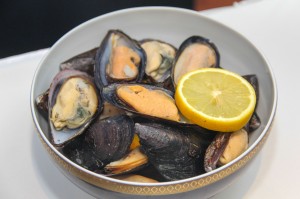
In less than 40 years, opening our economy reduced the poverty level to 12%, raised the average income to 20,000 US dollars and brought a lot of investments, particularly in the service and food sectors.” The target for Chile is to push more on food exports, thanks to its high quality production, and the goal is to become by 2020 one of the top 10 food exporters in the world.
 Why ASEAN countries and why Thailand?
Why ASEAN countries and why Thailand?
“We decided not to focus only on one country but to diversify, to reduce the risks in case of national economic crisis. We started with other South American countries, then the US, Europe and finally Asia. More investments were moving to Asia, which was – and is – growing quickly and Chile, being a copper producer, increased enormously its export to Asia.” But the raw materials market is a market with low added values. That’s why Chile wanted to try a new approach.”
“We researched the compatibility between our productions and regional productions, and tried to export other products. At the time the Headquarter for South East Asia was in Vietnam, but it was moved to Thailand because of its importance in the region.”
Internationalization comes with a lot of research and spreading information
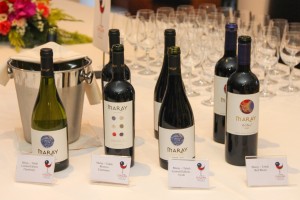 “We coordinate our national and regional offices, rechecking the data and adjusting to improve the economic cooperation and focus on the sectors where we can cooperate better with the country. Also, Chilean companies are still very local and we are helping them to internationalize.”
“We coordinate our national and regional offices, rechecking the data and adjusting to improve the economic cooperation and focus on the sectors where we can cooperate better with the country. Also, Chilean companies are still very local and we are helping them to internationalize.”
Approaching ASEAN as a group is the strategy because, even through there are many differences, there are also a lot of common points.
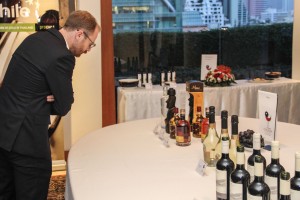 “ASEAN market is not huge as China, and that makes negotiations and cooperation easier. We coordinate meetings and travels between Chilean exporters and ASEAN partners, to make them understand how close we are.”
“ASEAN market is not huge as China, and that makes negotiations and cooperation easier. We coordinate meetings and travels between Chilean exporters and ASEAN partners, to make them understand how close we are.”
Let’s talk about Thailand.
“Thailand and Chile had 52 years of productive diplomatic relations. Our office Thailand was a commercial representation before, and now it’s the Commercial office for the region.” And that’s mainly because of the importance of Thailand in trade. “Thailand is our main partner in the region,  where we export mostly products with added value, particularly seafood and wine”. Moreover Thailand is a perfect regional hub and it’s still one of the most advanced countries in the region, even though it’s losing ground on other countries.
where we export mostly products with added value, particularly seafood and wine”. Moreover Thailand is a perfect regional hub and it’s still one of the most advanced countries in the region, even though it’s losing ground on other countries.
“The main obstacles to trade are of course the extremely high tariffs. That’s even worse when your direct competitors – New Zealand and Australia – have no or low tariffs. The goal of the FTA is to increase our export, because Chilean products are complementary to Thai products and vice versa.”
Which are the main Chilean products for the Thai market?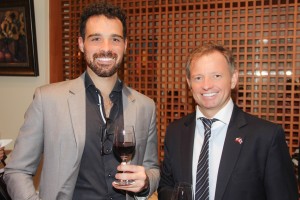
“We want to focus on the food and service industries. Fresh fruits, seafood, blue Mussels, meat and frozen salmon are some examples of what Chile has to offer to Thailand. Of course, we need to promote our products to make people understand that they can find these amazing Chilean products in Thailand.”
Let’s talk about what we are here for. Wine!
“More and more Thai people know and is interested in wine. I have many Thai friends that want to try and learn about wines from the New World. The main problem are the unbelievable tariffs that wine has to face, particularly if we 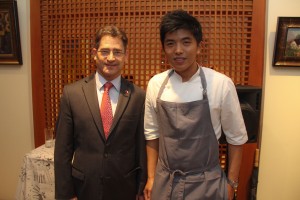 think that wine is not competing with local products, and has also some health benefits, if it comes with moderation. I think that if Thailand wants to get more advantages from its location, it needs to open more its economy.”
think that wine is not competing with local products, and has also some health benefits, if it comes with moderation. I think that if Thailand wants to get more advantages from its location, it needs to open more its economy.”
White or Red wine?
“It depends on the situation but in general, I like to start with a glass of white wine.”
Your favorite grape?
“Again, it depends. I really appreciate Pinot Noir and Cabernet Sauvignon”
Do you prefer to drink outside or at home?
“Wine is something to share, so I prefer to drink it in company, doesn’t matter in a restaurant or in front of a home-cooked dinner.”
Your favorite place to drink in Bangkok?
“Prime Cuts at the Millennium Hilton Bangkok, if I am looking for a fancy dinner.



 0
0